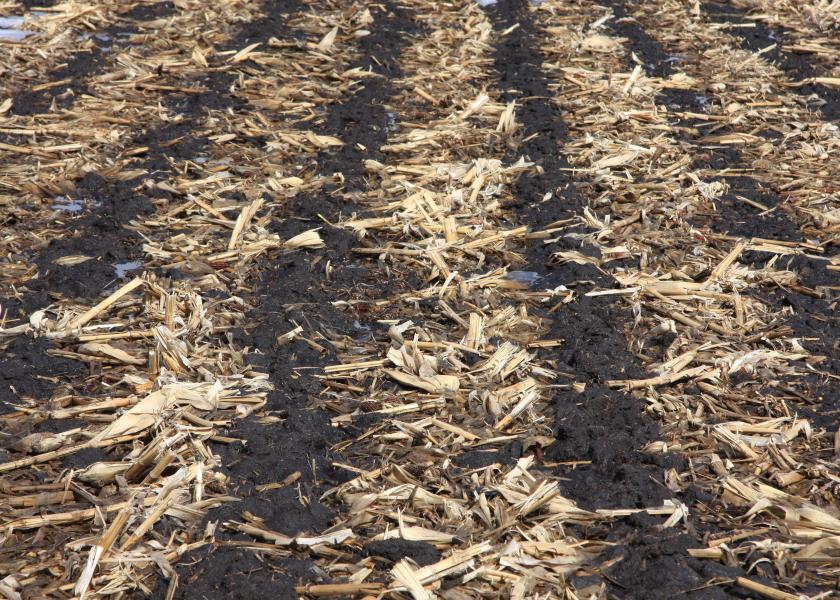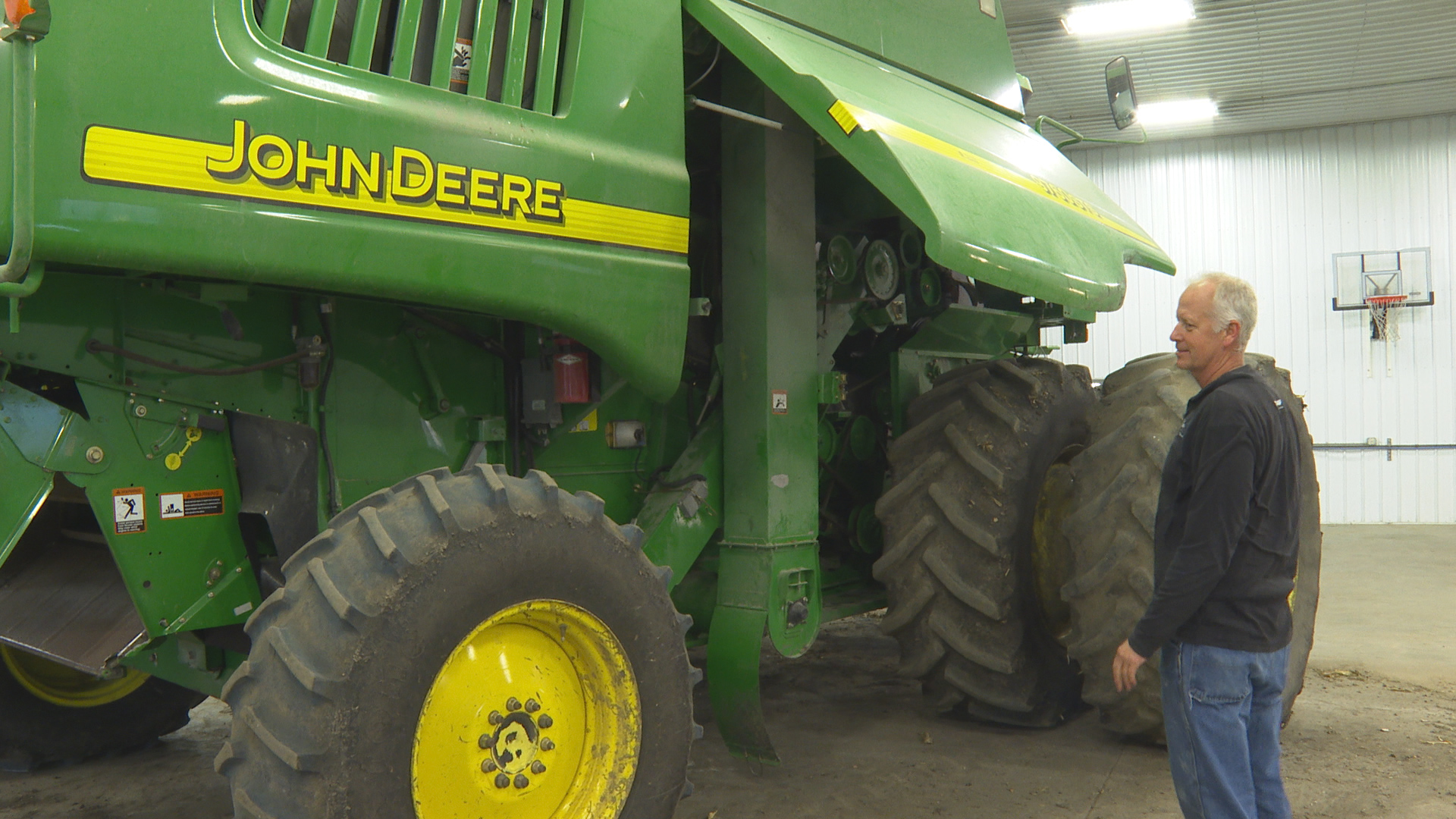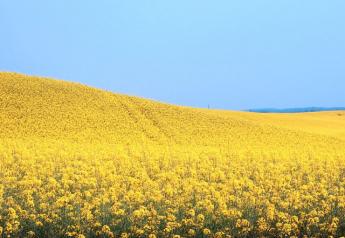A Novel Paradigm

Brian Ryberg’s use of Conservation Tillage and Cover Crops Brings a New Way of Thinking to Minnesota Farming
Minnesota farmer Brian Ryberg is different. He’s even been called an oddball.
“Others look at our operation as a little strange because we think differently,” Ryberg says.
The conservation-minded crop farmer not only takes pride in thinking differently but also in being successful at it. By adopting conservation tillage practices and incorporating cover crops in his management plan, Ryberg has been able to reduce operating costs, become a better steward and is now steps closer to achieving his ultimate goal — to leave a legacy for the next generation.
Changing the Mindset
Ryberg and his wife, Sandy, began farming with his parents, Howard and Marilyn, in a 10-year partnership before they retired. Operating as Ryberg Farms, Inc., today the business raises soybeans, corn and sugar beets. Ryberg transitioned the family farm to strip-till and use of cover crops six years ago — prompting a lot of second looks at the operation’s production methods.
“We are in a primarily conventional-till area,” Ryberg explains. “So, to go to strip-till and some no-till fields, the appearance is different. Our methods are different.”
At the time, Ryberg says they were raising a lot of corn-on-corn, and that market was particularly good. They racked up a lot of labor, tractor hours, and fuel expense working and then re-working the ground. After taking down a grove of trees and converting a newly rented property to crop ground, Ryberg says he began to wonder what they were really doing to the soil.
After several conversations with agronomy experts, some research and a trip to a conference, Ryberg embarked on a different path to productivity.
“I took a leap of faith and bought a strip-till rig,” he says. “It was a learning curve. We didn’t take a hit on yields.”
The move helped improve both soil structure and water infiltration on Ryberg’s mostly rented farmland, which has grown from 1,500 acres to about 6,300 acres in four counties west of Minneapolis-St. Paul near Buffalo Lake.
Where wind and water erosion had become a common sight, Ryberg says he can now better maintain the earth’s topsoil. Switching gears cut man-hours in half and slashed investment capital by half, further simplifying the operation, he says.
Ryberg’s change in mindset began with strip-till and has progressed to now include vertical-till methods.
After strip-tilling soybeans, Ryberg says he realized additional nutrients weren’t needed because of their already aggressive fertility program. The result was a move to vertical-till, which allows cereal rye seed to be applied at the same time as soybeans in the spring. The production combination helps Ryberg achieve 100% conservation tillage.
“We get phone calls from people that notice what we’re doing,” he says. “They like our efforts. So, we’ve been able to rent some additional land because of our way of farming. It’s always good to set yourself apart from somebody else. It’s a very competitive market. And having this niche in the way we do things has been very positive for us.”

Cleaning Up with Cover Crops
Ryberg’s initial use of cover crops came after sugar beet harvest about six years ago. Cereal rye was incorporated using a field cultivator. Ryberg says the first two years of the rye establishment were very successful.
“Sugar beet harvest leaves no residue on the surface, and with frequent open winters, we continually had soil erosion,” he says. “The introduction of rye drastically changed this for the better.”
After establishing rye as a cover crop, Ryberg says the acreage was strip-tilled in the spring, leaving rye between corn rows. The rye was terminated soon after, greatly improving weed control, he adds.
Ryberg also began interseeding a blend of cover crops in the same pass as he side-dressed nitrogen early in his corn crop. The technique yielded mixed results, he says, because the cover crops struggled through summer dormancy amid the 22-inch-row corn canopy.
“We will continue to explore cover crop mixtures to survive the summer dormancy in our narrow rows,” he says. “No-till soybeans may play a bigger part in practices, cover crops, erosion control and soil health in our operation if we can get cereal rye established in the fall.”
While Ryberg admits soil health is still a learning process for him, he says he is a real believer in seeing a direct benefit from fertility being placed directly below the root zone for the crop to maximize the efficiency of the nutrients. Phosphorus and potassium are applied only in the fall, and nitrogen is spoon-fed to crops throughout the spring.
“We have lowered our overall nitrogen load by 10% to 20% by applying in several passes in the spring versus fall anhydrous,” Ryberg explains.
The upper Midwest grower uses a vertical tillage tool with a seed box to incorporate cereal rye in one pass after harvest on all sugar beet ground and much of his cornstalks going to soybeans. While the rye doesn’t yield much growth in the fall, Ryberg says it grows quickly once the snow melts in the spring, allowing him to plant soybeans directly into the rye and terminate it soon after.
The practice has brought the veteran farmer favorable results by way of cleaner water in drainage ditches, reduced soil erosion and better weed control. But that’s not all.

“We’ve seen better yields on our soybeans,” he says. “It just seems like the less tillage we do, the more we’re finding out the soybeans respond to that really well for yield. So, it’s really been a win-win.”
Stepping outside the box is making an impression on fellow growers, too.
“We see that practice being adapted more for some of the other large growers in our area,” he explains. “They’re finding out the fuel savings, the economics are better and they aren’t losing yield.”
Making a Mark on the Industry
Though his peers raised eyebrows when Ryberg first introduced conservation tillage practices and cover crops to his operation, that didn’t faze him.
“My dad was always an innovator, so we weren’t afraid to try new things,” he explains. “It’s opened a lot of doors to meeting people that have become good friends and mentors. We share ideas back and forth or bounce things off each other.”
Building a network with other growers and with industry experts helps Ryberg stay on top of management strategies that will help make his operation successful.
“We have a great network of trusted people we work with,” he says. “Those advisors are anyone from
co-op salespeople to private agronomists, university extension staff and fellow farmers that have shared good experiences.”
By evaluating that information, Ryberg says he can develop an operating plan for each farm prior to the growing season. His plans include learning more about soil health ratings and what that might mean to lower fertility inputs. He also hopes to focus more on plant health products, such as biologicals and fungicides.
As Ryberg makes his mark in the agriculture industry through his conservation and stewardship efforts, he realizes his ultimate goal of wanting to preserve and improve the land he farms.
“Our lifetime is really pretty short when you look at the earth and that life cycle, but yet we want to be able to continue to produce food off of this land and allow the next generation to do the same,” Ryberg says.
Ryberg and his wife, Sandy, have six children—one son and five daughters. While it’s not likely any of them will carry on the family operation, one of Ryberg’s nephews currently works with him in the operation and has expressed an interest in carrying on the legacy. “I want to be able to pass it down to somebody,” Ryberg says. “You don’t work your lifetime to build something and have an auction. That’s not my goal.”
Regardless of whether the land he’s farming is owned or rented, Ryberg strives to leave the land in better condition than when he began farming it.
Taking necessary measures to stop soil erosion from wind or water movement is top of mind. His vision for farmland preservation is shared by landowners and family members alike, helping Ryberg further expand his operation.
“We strive to be open communicators,” Ryberg says. “Our relationships with landlords are such that we talk to them often by phone, in person, or they ride with us in the fields. We provide a quarterly newsletter to each of them. Our website shares pictures and projects we are doing in our operation.”
Farm activities are also posted on Facebook. Ryberg says their efforts help show respect and appreciation for the partnerships they have worked to create in the operation.
From hosting on-farm field days to cooperating with agricultural agencies like the Natural Resources Conservation Service for demonstrations on water infiltration, strip tillage and fertilizer application, networking has helped develop respect for Ryberg Farms both locally and around the globe.
As Ryberg concludes, “We want to leave a legacy to the next generation to be in a better position and to be good stewards of the land while we farm it.”







